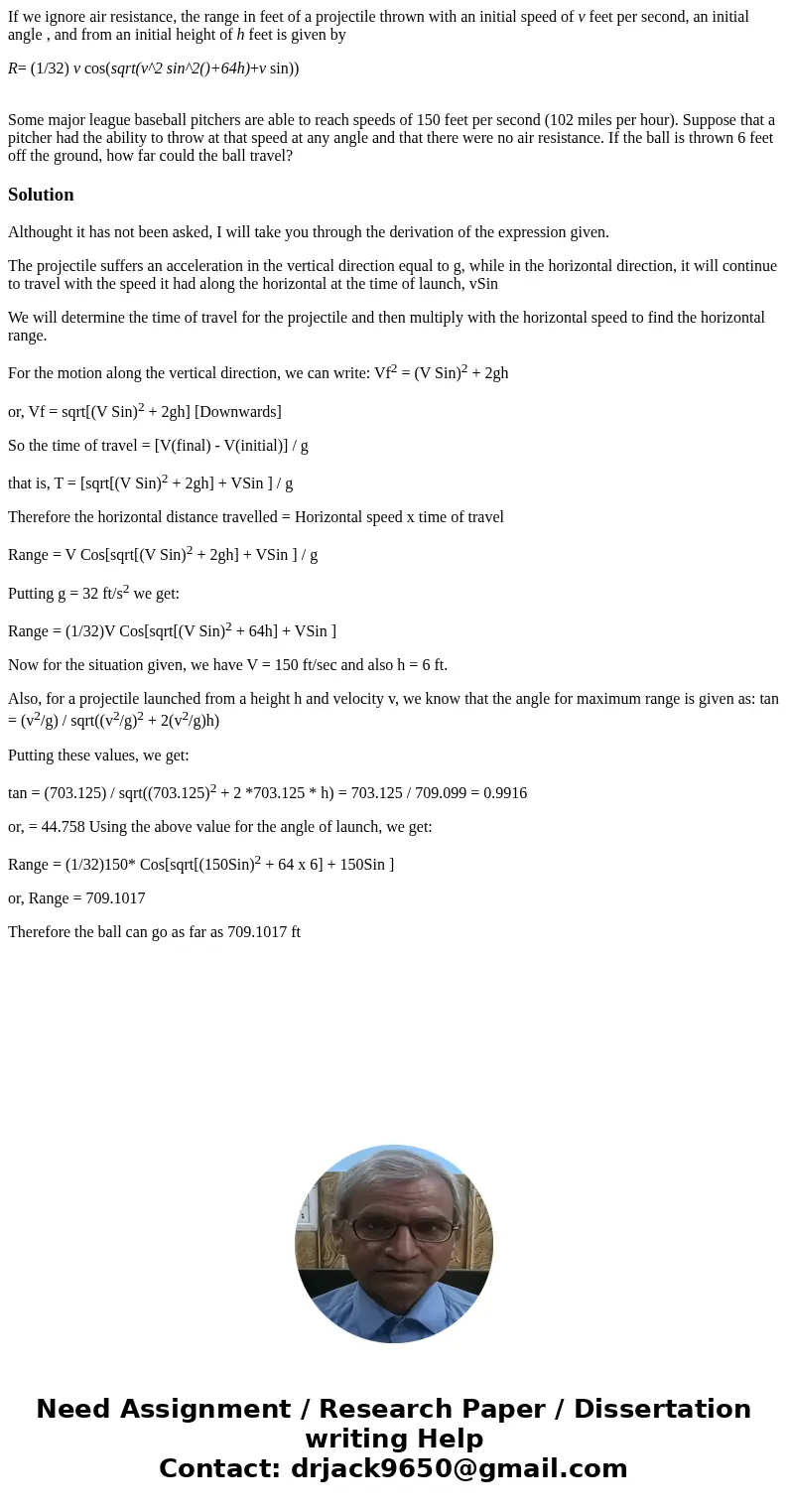If we ignore air resistance the range in feet of a projectil
If we ignore air resistance, the range in feet of a projectile thrown with an initial speed of v feet per second, an initial angle , and from an initial height of h feet is given by
R= (1/32) v cos(sqrt(v^2 sin^2()+64h)+v sin))
Some major league baseball pitchers are able to reach speeds of 150 feet per second (102 miles per hour). Suppose that a pitcher had the ability to throw at that speed at any angle and that there were no air resistance. If the ball is thrown 6 feet off the ground, how far could the ball travel?
Solution
Althought it has not been asked, I will take you through the derivation of the expression given.
The projectile suffers an acceleration in the vertical direction equal to g, while in the horizontal direction, it will continue to travel with the speed it had along the horizontal at the time of launch, vSin
We will determine the time of travel for the projectile and then multiply with the horizontal speed to find the horizontal range.
For the motion along the vertical direction, we can write: Vf2 = (V Sin)2 + 2gh
or, Vf = sqrt[(V Sin)2 + 2gh] [Downwards]
So the time of travel = [V(final) - V(initial)] / g
that is, T = [sqrt[(V Sin)2 + 2gh] + VSin ] / g
Therefore the horizontal distance travelled = Horizontal speed x time of travel
Range = V Cos[sqrt[(V Sin)2 + 2gh] + VSin ] / g
Putting g = 32 ft/s2 we get:
Range = (1/32)V Cos[sqrt[(V Sin)2 + 64h] + VSin ]
Now for the situation given, we have V = 150 ft/sec and also h = 6 ft.
Also, for a projectile launched from a height h and velocity v, we know that the angle for maximum range is given as: tan = (v2/g) / sqrt((v2/g)2 + 2(v2/g)h)
Putting these values, we get:
tan = (703.125) / sqrt((703.125)2 + 2 *703.125 * h) = 703.125 / 709.099 = 0.9916
or, = 44.758 Using the above value for the angle of launch, we get:
Range = (1/32)150* Cos[sqrt[(150Sin)2 + 64 x 6] + 150Sin ]
or, Range = 709.1017
Therefore the ball can go as far as 709.1017 ft

 Homework Sourse
Homework Sourse